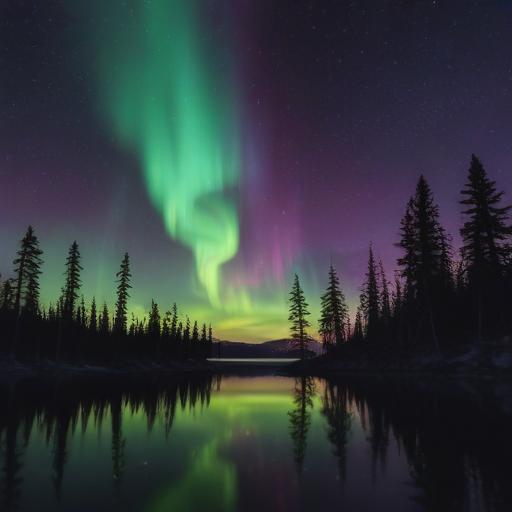Intense auroras are anticipated to illuminate the skies across northern North America, potentially visible from approximately 15 U.S. states tonight, June 25. This phenomenon is attributed to a “hole” in the sun that is sending a swift stream of charged particles toward Earth.
The National Oceanic and Atmospheric Administration’s (NOAA) Space Weather Prediction Center has indicated that the most vibrant displays are likely to occur over Alaska and Canada, but they may also extend into northern and upper Midwest states, ranging from New York to Idaho.
The exciting auroral display will be a result of a coronal hole in the sun’s atmosphere, which allows high-speed solar wind to escape. When these charged particles collide with Earth’s atmosphere, they cause increased geomagnetic activity, leading to stunning auroras. The Space Weather Prediction Center expects a moderate geomagnetic storm of category G2, which typically produces strong auroras.
The UK’s Met Office has also reported forecasts of minor to moderate geomagnetic storms, with a slight possibility of a strong G3 storm. Such storms are categorized on a scale that ranges from G1 to G5, with G5 being the most severe.
Auroras appear when charged particles from the sun interact with Earth’s upper atmosphere, exciting gas particles that emit light in various colors—greens and reds from oxygen and blues and purples from nitrogen. While the northern lights are expected to be visible mostly in Canada and Alaska, those living in northern U.S. states can see them if they are situated within a certain range, potentially up to 620 miles away from the source.
The optimum times for viewing these celestial displays are shortly after sunset or just before sunrise. While the predictions are promising, the nature of auroras makes them unpredictable, so there’s no assurance that residents in the northern states will witness the lights.
This event could serve as a reminder of the beauty and mystery of our solar system, inviting people to step outside and enjoy the natural spectacle of the auroras. The anticipation of seeing such a magnificent light show can inspire a shared sense of wonder and connection to the cosmos.
